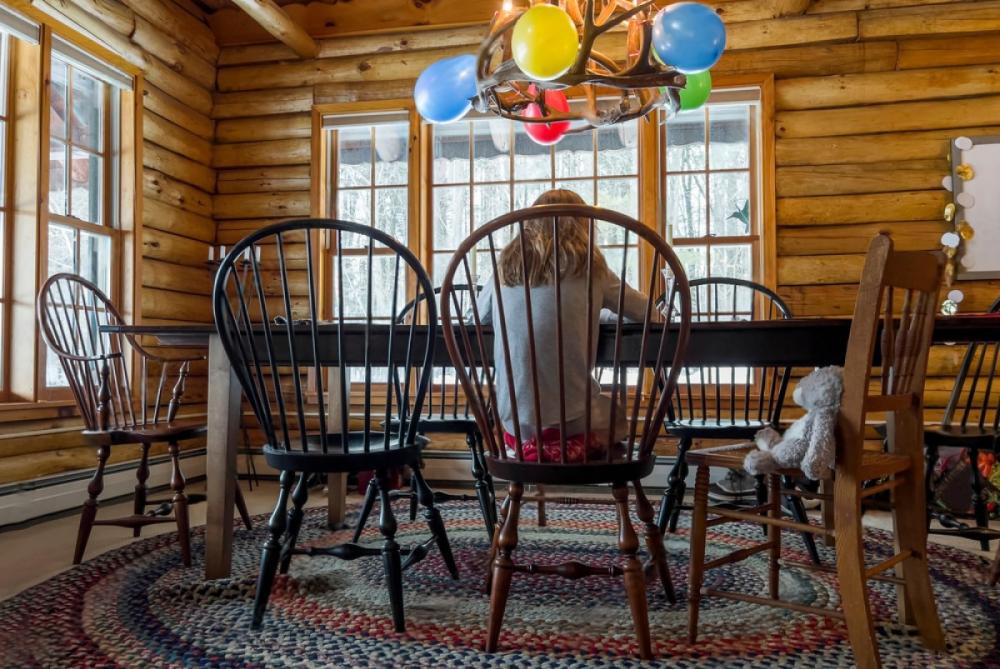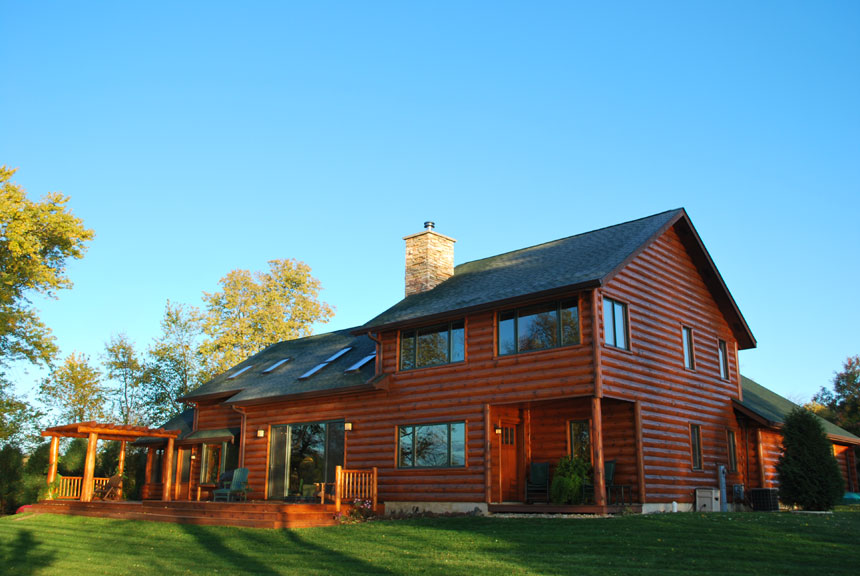How To Select Wood For Log Siding

Wood log siding is a terrific option for building a house, cabin, garage, or retail store. It provides the full log look without the full log price and maintenance issues. It’s also used for converting an existing home or structure into a log home or structure.
When making plans, you should understand the nature of log siding, select a species of wood, compare prices of different woods, and decide who will install the siding. A log siding home also needs a corner system and trims for doors and windows.
What Is Wood Log Siding
Wood log siding is milled from a variety of tree species native to the U.S. Once the trees are harvested and stripped of limbs and bark, they are milled to consistent diameters for different sizes of siding. The centers of the logs are removed leaving two “D” shaped pieces of siding. Each piece of siding is sanded smooth for installation and application of stain/sealant. There are five typical shapes or profiles in common use today, including:
- Quarter Log is economical in 2” x 6” and 2” x 8” sizes
- Half Log is the most popular in 3” x 6” and 3” x 8”
- Premium Log presents a fuller look in 3” x 8” and 3” x 10”
- Hand-Hewn Log looks like it was shaped by hand with an axe or adze tool and is available in all the above sizes
- Pre-Finished Log has the stain applied at the mill for your convenience
Wood log siding is secured to conventional wall framing with galvanized weather-proof screws. It is available in tongue and groove with end-matching (best) and plain tongue and groove.
Species Of Wood For Log Siding
 Several species of wood are used for log siding to cover the exterior and interior walls. Each has its pros and cons while pine provides the most benefits for the dollar and is the one we recommend. All the following woods need staining and sealing for protection.
Several species of wood are used for log siding to cover the exterior and interior walls. Each has its pros and cons while pine provides the most benefits for the dollar and is the one we recommend. All the following woods need staining and sealing for protection.
- Red Pine is the most economical, readily available, sustainable, and experiences little to no shrinkage once kiln-dried
- Cedar is attractive and is insect, fungus, and moisture-resistant but is more expensive
- Cypress provides low shrinkage when properly dried and is naturally resistant to insects, fungus, and decay but is also very expensive and can be hard to find
- Fir has low shrinkage but has little resistance to decay, fungus, and insects and needs to be treated to overcome its weaknesses
- Spruce is affordable, has a moderate shrinkage rate, poor decay and fungus resistance, and needs kiln drying and treating to overcome its weaknesses
- Oak (white) is attractive, has a high resistance to decay, can warp without kiln drying, needs treating, and is very expensive
- Redwood is popular on the west coast, has good resistance to decay, insects, and fungus, is expensive, and can be hard to find
“It (wood siding) provides the full log look without the full log price and maintenance issues.”
A Budget Is A Critical Factor
 Creating a budget is the first step for selecting the type of wood for log siding and the second is how you will finance the purchase. These are critical factors in making a budget:
Creating a budget is the first step for selecting the type of wood for log siding and the second is how you will finance the purchase. These are critical factors in making a budget:
- Price the wood from online and local suppliers
- The wood should be properly kiln-dried
- It should be hand-inspected with no defects
- Select the tongue and groove feature
- Does it have the end-matching design
- Consider door and window trims
- Compare shipping charges
- Is there a warranty or guarantee
Each of these desirable features can carry an additional cost, and you should consider buying your log siding directly from the supplier that mills the wood rather than from a DIY store or lumber yard. You will get better quality products at fair prices.
Other Materials Needed For Wood Log Siding
Your log house, cabin, or business needs a log corner system and trims for doors and windows. The siding supplier should stock these items that can be purchased in the same quality and wood type as the log siding. Select one of these options for corners and trims:
| Pine Corner Systems | Pine Log D-Trims |
| Vertical | 2” x 6” |
| Butt-N-Pass | 3” x 4” |
| Saddle Notch | 3” x 6” |
| 4” x 4” |
Wood electrical boxes for outlets and lights and custom arched trims for doors and windows are other options that complement wood log siding. The supplier will help you match all the options you want to your log siding selection.
Selecting the right wood for your log siding, corners, and trims is not rocket science but it takes an intelligent effort to find what you need at affordable prices. The overwhelming favorite is pine log siding because it provides the full log look without the full log price. You can even convert your existing home into a log home!
 Store Location
Store Location







